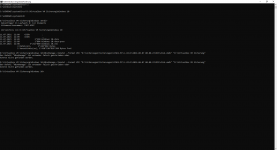Test778899
Komplett-PC-Käufer(in)
Hallo
meine interne Festplatte hat CRC-Feler. Zum Glück habe ich ein “Backup” mit dem WD SmartWare Pro auf eine externe WD Festplatte.
Ich habe die interne defekte Festplatte vom Strom abgeschlossen und eine neue leere WD-Festplatte eingebaut. Jetzt möchte ich die Daten (incl. der Verzeichnisstruktur) auf die neue Festplatte abrufen.
Leider schaffe ich das nicht. Ich kann alle Dateien anscheinend nur ein ein bestimmtes Verzeichnis oder auf die ursprünglichen Datenträger zurückspielen. Der ursprüngliche ist ja ausgebaut und stattdessen eine neue leere Festplatte mit gleichem Laufwerksbuchstaben eingebaut.
meine interne Festplatte hat CRC-Feler. Zum Glück habe ich ein “Backup” mit dem WD SmartWare Pro auf eine externe WD Festplatte.
Ich habe die interne defekte Festplatte vom Strom abgeschlossen und eine neue leere WD-Festplatte eingebaut. Jetzt möchte ich die Daten (incl. der Verzeichnisstruktur) auf die neue Festplatte abrufen.
Leider schaffe ich das nicht. Ich kann alle Dateien anscheinend nur ein ein bestimmtes Verzeichnis oder auf die ursprünglichen Datenträger zurückspielen. Der ursprüngliche ist ja ausgebaut und stattdessen eine neue leere Festplatte mit gleichem Laufwerksbuchstaben eingebaut.
Zuletzt bearbeitet:





